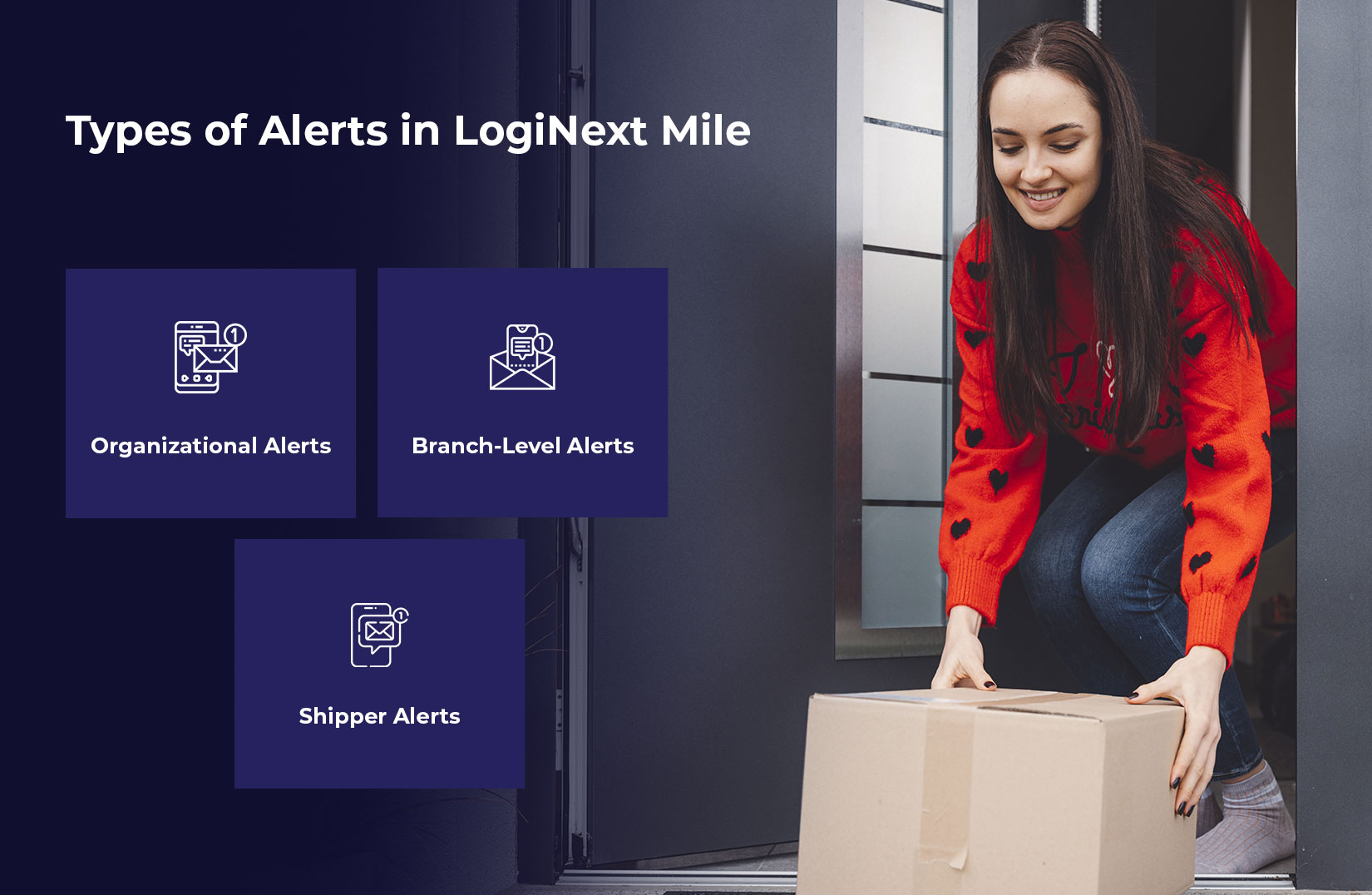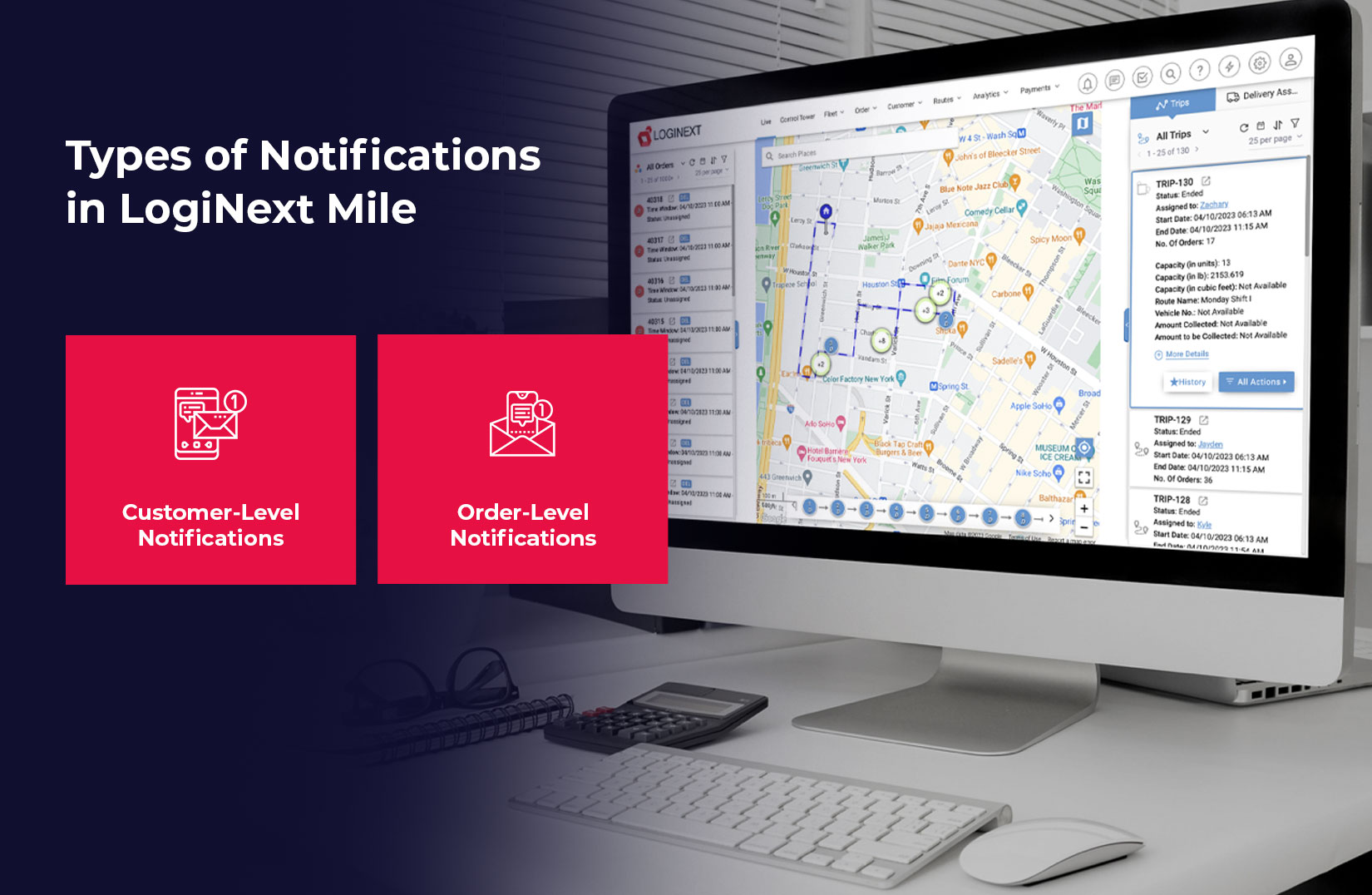
Ding Dong! Your Delivery Just Got Smarter with LogiNext Mile
In the word of eCommerce and last mile logistics, customer expectations have never been higher. A recent survey revealed that 73% of consumers expect regular updates about their delivery status. Lack of communication during delays might result in churn and discontent. This is where LogiNext Mile, a powerful delivery management software, steps in to bridge the gap.
LogiNext Mile isn’t just about managing deliveries- its about redefining them. One of its standout capabilities is its intelligent alert and notification system. It is designed to provide real-time visibility and keep all stakeholders informed- from top management to end customer.
Let’s break down how LogiNext Mile transforms the delivery experience through its robust notification and alert system.
Why Alerts and Notifications Matter in Delivery Management
In delivery operations, effective communication is the foundation of efficiency. Alerts and notifications ensure that the right people receive the right information at the right time. Whether it’s an internal delay or a customer-facing update, proactive communication can significantly improve service levels.
In fact, businesses using automated notification systems report a 20-25% reduction in failed deliveries.This directly results in cost reductions and enhanced customer satisfaction.
With LogiNext Mile, alerts and notifications are customizable, hierarchical, and data-driven. Here’s how they work:
Types of Alerts in LogiNext Mile

Alerts in LogiNext Mile are real-time triggers that notify different stakeholders within the organization about important events or exceptions. These are categorized into three levels to match the structure of logistics operations.
1. Organizational Alerts:
Organizational alerts are designed for top-level management and corporate leadership. They provide macro-level insights across regions, branches, and delivery units. These alerts focus on high-level performance indicators such as SLA adherence, delivery completion rates, and fleet utilization metrics. For instance, if a region consistently underperforms, an organizational alert will flag it, allowing strategic decision-makers to intervene promptly.
Use Cases:
– Daily delivery performance summaries
– Exception alerts like SLA breaches
– Delays across multiple survey areas
2. Branch-Level Alerts:
These alerts are tailored for operational managers at specific branches or delivery hubs. They notify teams about issues like delayed dispatches, route deviations, or high return-to-origin (RTO) rates. By highlighting localized exceptions, branch-level alerts empower regional teams to address inefficiencies before they impact service quality.
Use Cases:
– Delayed departure of delivery vehicles
– High number of undelivered orders from a specific hub
– Vehicle idle time alerts
3. Shipper Alerts:
Shipper notifications are designed for outside logistics associates or third-party service companies (3PLs). They offer transparency into vendor performance, such as missed pickups, late deliveries, or non-compliance with service standards. These alerts help businesses enforce accountability and maintain service consistency across outsourced networks.
Use Cases:
– Missed pickups by a shipper
– Compliance violations
– Poor delivery performance by external partners
Types of Notifications in LogiNext Mile

Notifications in LogiNext Mile are crafted to enhance visibility and engagement at the customer and order levels. Unlike alerts, which are more operational and internal in nature, notifications are outward-facing and play a crucial role in customer communication. They ensure that end-users are kept informed at every stage of the delivery journey. Thereby, increasing trust and reducing anxiety around order fulfillment.
Here are two primary types of notifications:
1. Customer-Level Notifications:
These notifications are sent directly to customers and can be fully tailored to align with specific delivery stages. Thus, ensuring relevant, timely communication that enhances the overall delivery experience and customer satisfaction.
Use Cases:
– “Your order is on the way!”
– “Delivery delayed due to weather conditions”
– “Driver is 10 minutes away”
Communication methods consist of SMS, email, WhatsApp, or push alerts through the brand’s mobile app. These updates reduce customer anxiety, minimize support calls, and enhance overall satisfaction.
According to research, companies that provide real-time order tracking with notifications see a 33% boost in repeat purchases.
2. Order-Level Notifications:
Order-level notifications provide detailed, real-time updates on the status of each individual shipment. Which allows for precise tracking, quicker issue resolution and improved coordination across logistics and support teams.
Use Cases:
– Order packed and ready for dispatch
– In-transit delays or rerouting
– Failed delivery attempt and rescheduling options
Insights at the order level are particularly essential for valuable or time-sensitive deliveries, like pharmaceuticals or perishable itemms.
By automating these communications, business can achieve operational efficiency and deliver a seamless experience.
The Power of Customization in LogiNext Mile
One of the standout features of LogiNext Mile is its robust customization capabilities. Businesses can configure alerts and notifications to match their specific workflows, delivery models and communication preferences. This ensures that each message serves a clear purpose- whether it’s for operational awareness or enhancing customer experience.
From defining delivery stages to selecting communication channels like SMS, email, WhatsApp or push notifications, everything is fully adaptable. A retail brand may choose friendly, customer-centric messaging, while a logistics provider may opt for concise, professional alerts tailored to internal stakeholders. This adaptability helps maintain brand consistency across all touchpoints.
Additionally, notifications can be customized based on parameters such as region, language, time zone, user role, and delivery priority. By sending the right message to the right person at the right time, businesses improve visibility, speed up response times, and create a seamless, reliable delivery experience. All of this creates a seamless delivery management.
Closing Thoughts
In the competitive world of logistics, smart communication can be the key differentiator. LogiNext Mile’s intelligent alert and notification system ensures that every stakeholder- from the C-suite to the customer- stays in the loop.
Whether you’re managing hundreds of daily deliveries or scaling a nationwide network, having the right delivery management software with real-time alerts and customer notifications can transform your operations.
Ready to make your deliveries smarter? LogiNext Mile is here to ring the bell- quite literally! Click on the red button and book a demo today.
19







@LogiNext